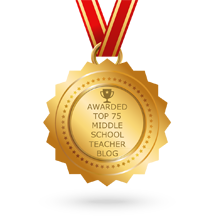The big theme of their sessions was relevance. Obviously we want to take into account student interests when we teaching, and ideally we would give all students readings that were directly related to their interests. But, we also have to instruct classic texts, books and articles that students read at various grade levels as a whole class. The Outsiders. Romeo and Juliet. The Scarlet Letter.
I get differentiation, but I also see power in one class, one book. This year, I'm only going to have one book that the whole class reads, and it's The Giver, which we are immersed in now. I've read The Giver with 6th, 7th, and 8th graders, and I say it's best interpreted by eight graders, but I digress.
Back to relevance, though - since we can't give kids readings on their interests all the time, we have to build relevance into our teaching. The strategies that Beers and Probst modeled to us last week are called Possible Sentences and Notice and Wonder. (Well, I'm naming the second one Notice and Wonder!) I used these strategies yesterday with my ELA class and they worked so flawlessly to engage kids to the text. Here's how to do it.
Possible Sentences
Create a group of words and phrases that are about the coming chapters of your book. There should be a bunch of choices. What I did is wrote sentences about the book - things that were actually going to happen, and then I broke them down into a set of names, a set of actions, and a set of descriptors (I'm sure there's a better grammar way to explain that third column!) Here's what I came up with:
Then I modeled to students how to write sentences, using words and phrases from the chart. I showed them a few I created, and then asked them to write two. Then they did a pair share. Then the pair wrote a third. Then silently they wrote two more.
After each kid had five sentences, I had them share out to me and I recorded them on the board:
Notice and Wonder
Now the cool part, I ask students to notice sentences, consider them, and then wonder about them. Here's a lot of questions we had about Jonas and his medication:
As you can see, they were concerned about the pill that Jonas takes and were wondering many things. As the class began sharing, it stemmed more questions. We were rolling!
Prior to that one, we wondered about the other Possible Sentences:
Genius Strategy
These Possible Sentences were created by kids but used the language from the teacher who has already read the book. When you use this strategy, you create an easy way for students to predict using language you give them (so great for ELs) and then you invest them into the story by wondering together.
The engagement yesterday was awesome after this strategy. I highly recommend it!
Other Applications
Think of all the other readings we do in other content areas! When Beers and Probst modeled this strategy, they did so with a NF article about child labor laws in an African (African? Can't exactly remember where...) country. They didn't read the article with us, just did this pre-reading work, and it really stimulated our interest in the topic. I can see this being HIGHLY successful in any content area!
Have you tried these strategies? Have you taught with Notice and Note? Keep the conversation going in the comments below!



























0 comments:
Post a Comment